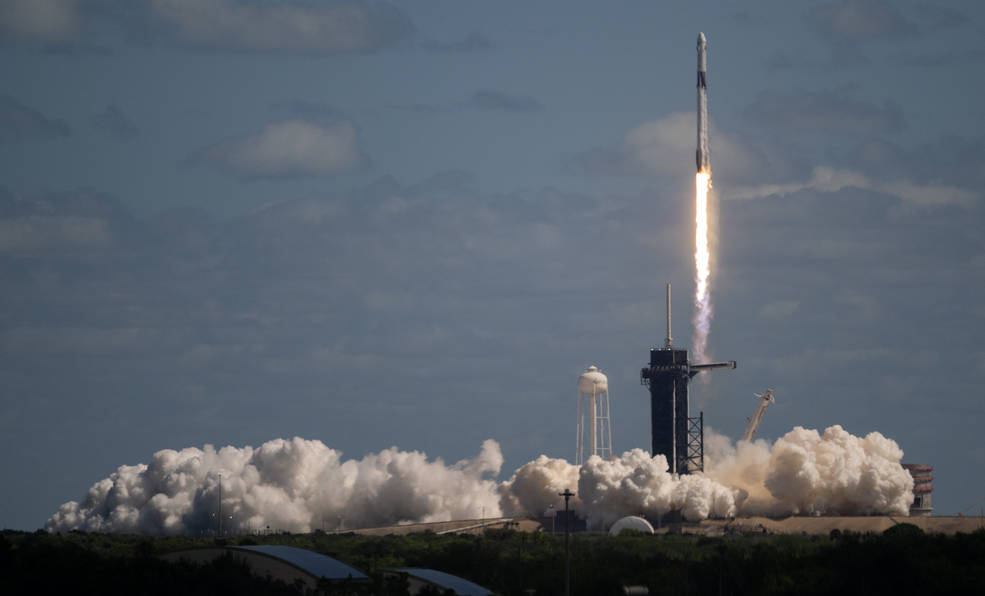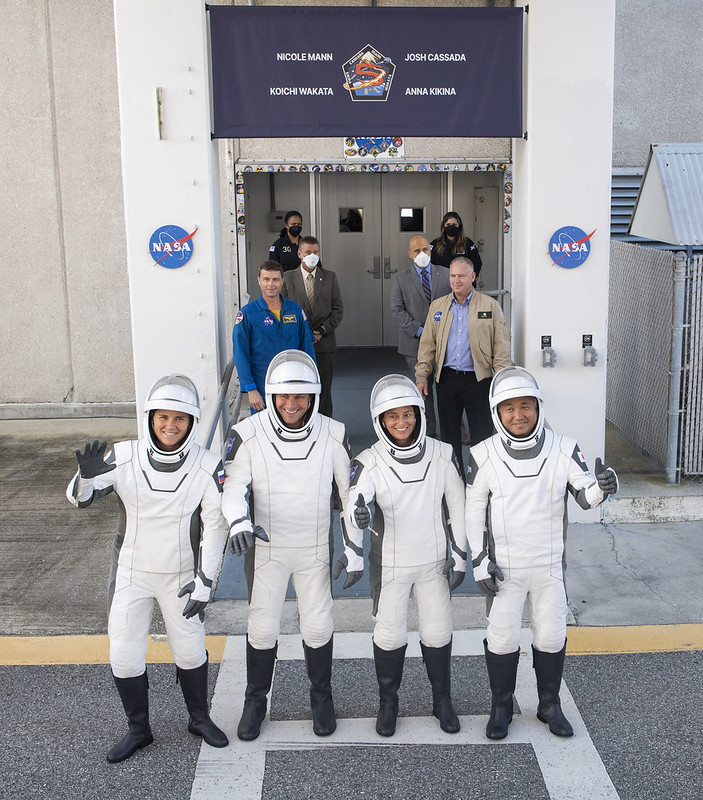A new crew is on the way to the International Space Station, and the crew is a true and hopeful reflection of the international nature of the station. Commander Nicole Mann become the first Native American woman in space, and she is joined by JAXA (Japan Aerospace Exploration Agency) astronaut Koichi Wakata and Roscosmos cosmonaut Anna Kikina, as well as pilot and NASA astronaut Josh Cassada.
Mann is also the first woman to command a Dragon capsule. Kikina is the first Russian to join a US space flight since the invasion of Ukraine.
They launched on SpaceX Falcon 9 rocket on board the Dragon Endurance spacecraft, lifiting off at 12:00 p.m. EDT from on October 5, 2020 from Launch Complex 39A at the Kennedy Space Center to begin a six-month mission. While they are named Crew-5, this is the sixth crew to fly to the ISS via a SpaceX Dragon capsule -- which includes the Demo-2 test flight in 2020 to the space station – as part of the NASA's Commercial Crew Program. This is the first spaceflight for Mann, Cassada, and Kikina, and the fifth for veteran Wakata.
NASA administrator Bill Nelson said, "Missions like Crew-5 are proof we are living through a golden era of commercial space exploration. It's a new era powered by the spirit of partnership, fueled by scientific ingenuity, and inspired by the quest for new discoveries."
The four-member crew is scheduled to arrive at the ISS today (October 6) after an approximately 29-hour flight, reaching the station that orbits about 250 miles (420km) above Earth. During their stay aboard the ISS, Crew-5 will conduct more than 200 science experiments and technology demonstrations, including studies on printing human organs in space, and helping to better understand heart disease.
Mann, Cassada, Wakata, and Kikina will join the space station's Expedition 68 crew of NASA astronauts Bob Hines, Kjell Lindgren, Frank Rubio, and Jessica Watkins, ESA (European Space Agency) astronaut and station commander Samantha Cristoforetti, and Roscosmos cosmonauts Sergey Prokopyev and Dmitri Petelin. For a short time, the number of crew aboard the space station will increase to 11 people until Crew-4 astronauts Hines Lindgren, Watkins, and Cristoforetti return to Earth a few days later.
Cooperation Tested
While the cooperation in space between the U.S. and Russia is being tested since Russia invaded Ukraine in February, during a news briefing with NASA and SpaceX on Monday, former cosmonaut and now a Roscosmos official Sergei Krikalev said he intends to keep working together, as always.
"We just continue what we started many years ago in 1975 when the Apollo-Soyuz crew worked together, and now we continue our cooperation," he said after mentioning a "new phase of cooperation" with the exchange of seats between NASA and Roscosmos.
Even though NASA intends to keep the ISS operational until roughly 2030, this summer, leaders at Roscosmos said they wanted to withdraw from the ISS after 2024. According to a report, they said that by that time, "all obligations to partners will be fulfilled." Additionally, Russia said they want to build their own space station.
Krikalev said yesterday that his agency has approval to continue with the ISS until 2024 but he hopes to secure Kremlin "permission" to extend the partnership further, until Russia builds a new space station.
 Universe Today
Universe Today

